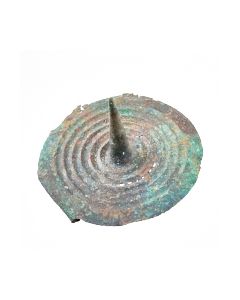Bronze Age - Sold antiquities
Archive of sold antiquities
All artefacts sold in our gallery are fully documented in our online archive and database. Being a specialist ancient art dealer, preserving also the more recent history of each and every piece sold in our shop is at our heart. That is particularly useful for artefacts that changed owners in the meantime. Information that may have been lost in the process can be easily restored from our archives. Please do not hesitate to contact us if you need further information about ancient items that have been sold in our gallery. We can help you with reconstructing the history of ownership for those items. All information about our customers will be kept confidential, of course.-
 Published cypriot milk bowl
Published cypriot milk bowl1977 on exhibition in the Bielefeld Museum of Fine Arts. Nicely preserved piece, from an old German private collection, acquired prior to 1972. Coming with an ArtLoss certificate.
Price: on request Early Old Babylonian cylinder seal
Early Old Babylonian cylinder sealCylinder seal made of black rock. It bears a religious scene dating shortly prior to or right at the beginnings of Old Babylonia.
Price: on request Mesopotamian cylinder seal
Mesopotamian cylinder sealWhite cylinder seal dating to the Akkadian period. A mythological scene is engraved into the cylindrical body.
Price: on request Cylinder Seal from the late Uruk period
Cylinder Seal from the late Uruk periodSmall seal made of appealing igneous rock. The engraved wave pattern is typical for the late Uruk period of Mesopotamia.
Price: on request Cylinder seal with god of the moon and inscription
Cylinder seal with god of the moon and inscriptionCylindrical seal with religious scene and inscription from the Third Dynasty of Ur. A worshipper is lead to the god of the moon Sin.
Price: on request Mesopotamian cylinder seal
Mesopotamian cylinder sealSeal made of white stone with depiction of scorpions. Late Uruk to early Jamdat Nasr period.
Price: on request Cylinder seal with wrestling scene
Cylinder seal with wrestling sceneStunning white seal made of shell. Mesopotamian Early Dynastic Period III.
Price: on request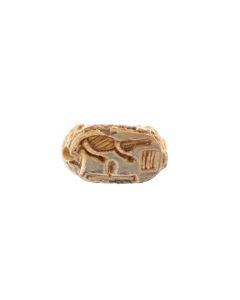 Egyptian scarab for Sobekhotep
Egyptian scarab for SobekhotepThe back of the scarboid body is shaped like a lying cat. New Kingdom of ancient Egypt, around 1000 BC.
Price: on request Massive Bronze Age spear head, possibly celtic
Massive Bronze Age spear head, possibly celticPerfectly preserved, large piece with beautiful patina. From an old German collection.
Price: on request Faience tile of the Djoser pyramid type
Faience tile of the Djoser pyramid typeEgyptian wall tile from the Old Kingdom, 2nd to 3rd dynasty. The tile type is known from the famous step pyramid of king Djoser.
Price: on request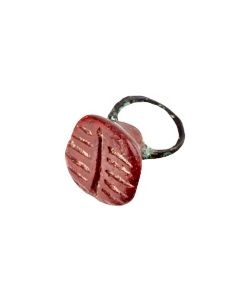 Anatolian porphyry stamp seal
Anatolian porphyry stamp sealBasic shape of a four sided pyramid. Made of wonderful intensely red stone. Middle Bronze Age of Anatolia.
Price: on request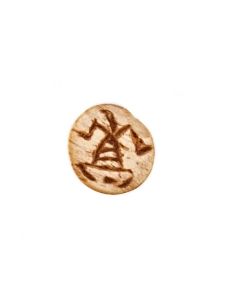 Western Asiatic button seal with scorpion
Western Asiatic button seal with scorpionInteresting button shaped seal from the time of the ancient Assyrian trade settlements in Syria and Anatolia. 19th to 18th cent. BC. From the Dr. Langenkamp collection, with a scientific note from Prof. Mayer-Opificius.
Price: on request Western Asiatic button seal with hares
Western Asiatic button seal with haresInteresting button shaped seal from the time of the ancient Assyrian trade settlements in Syria and Anatolia. 19th to 18th cent. BC. From the Dr. Langenkamp collection, with a scientific note from Prof. Mayer-Opificius.
Price: on request Pre-Dynastic pottery of Ancient Egypt
Pre-Dynastic pottery of Ancient EgyptThe simple vessel is made of coarse clay. It dates to the end of the 4th millenium BC and hence witnessed the beginning of the Ancient Egyptian civilization.
Price: on request Bronze Age axe head
Bronze Age axe headVery well preserved axe head. Late Bronze Age, 10th to 9th cent. BC.
Price: on request Cowroid with decorated body
Cowroid with decorated bodyThe cowroid has an interesting decoration across the upper surface. The lower surface is inscribed with hieroglyphs. This cowroid is discussed in the catalogue of Gautier-Vodoz.
Price: on request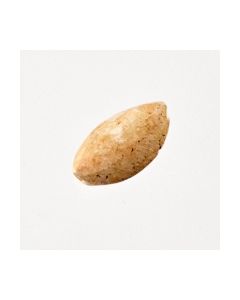 Cowroid with magic spell
Cowroid with magic spellThe hieroglyphs of the anra type are to be interpreted as magical formula. From the Second Intermediate Period of ancient Egpyt. This scaraboid is described in the catalogue of Gautier-Vodoz.
Price: on request Cowroid with Ankh and papyrus
Cowroid with Ankh and papyrusThe seal is engraved with the breath of life between two papyrus plants. This scaraboid is described in the catalogue of Irène Gautier-Vodoz.
Price: on request Scaraboid from the Middle Kingdom
Scaraboid from the Middle KingdomThe stamp shows hieroglyphs with a title for the king of Upper and Lower Egypt. This scaraboid is described in the catalogue of Irène Gautier-Vodoz.
Price: on request Bronze Age Elamite ceramic vessel
Bronze Age Elamite ceramic vesselBowl from the Middle Elamite period with painted geometric design. From the area of ancient Iran.
Price: on request Bronze Age Elamite ceramic vessel
Bronze Age Elamite ceramic vesselBowl from the Middle Elamite period with painted geometric design. From the area of ancient Iran.
Price: on request Scarab with lion
Scarab with lionThe scene shows a walking lion. It is framed by an oval cord. This scarab is described in the catalogue of Irène Gautier-Vodoz.
Price: on request Scarab with protective formula
Scarab with protective formulaAmulet for protection. Stilized lotus flowers on the upper side. Magic formula on the lower side. This scarab is described in the catalogue of Irène Gautier-Vodoz.
Price: on request Scarab with geometric motive
Scarab with geometric motiveThe lower side exhibits a symmetrical arrangements of cords, two of which are wrapped around each other. This scarab is described in the catalogue of Irène Gautier-Vodoz.
Price: on request Scarab with geometric motive
Scarab with geometric motiveThe motive exhibits two symmetry axes and at least six triangles. A wonderful artistic expression of the highly evolved Egyptian maths. This scarab is described in the catalogue of Irène Gautier-Vodoz.
Price: on request Scarab with pattern of circles
Scarab with pattern of circlesThe beetle stone bears a popular motive of the Middle Empire. A nice example of its kind. This scarab is described in the catalogue of Irène Gautier-Vodoz.
Price: on request Scarab with magic spell
Scarab with magic spellThe hieroglyphs are of the so called anra design, a magic spell in the ancient Egyptian belief. The scarab is from the 13th to 15th dynasty. It is described in the catalogue of Gautier-Vodoz.
Price: on request Bronze dagger from Iran
Bronze dagger from IranLong dagger or short sword of good craftsmenship dating to the transitional period between Bronze Age and Iron Age. Rare form. 46cm long. Coming with an Art Loss certificate.
Price: on request Scarab with hieroglyphic formula
Scarab with hieroglyphic formulaThe piece is from the Second Intermediate Period. It was probably meant as a good fortune or protective amulet.
Price: on request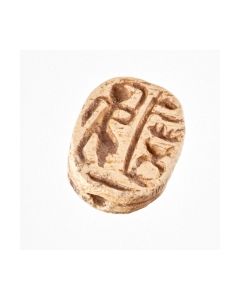 Scarab with cartouche
Scarab with cartoucheThe scarab from the late Ramesside period shows a standing person. A cartouche in front bears the name of pharao Mencheperre, who was famous as Thutmose III.
Price: on request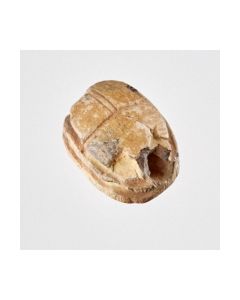 Egyptian Scarab with hieroglyphs
Egyptian Scarab with hieroglyphsInteresting scarab made of steatit with inscription for Amun. Dating to the 19th to 21st dynasty of ancient Egypt.
Price: on request Bronze Age Elamite ceramic vessel
Bronze Age Elamite ceramic vesselBowl from the Middle Elamite period with painted geometric design. From the area of ancient Iran.
Price: on request


